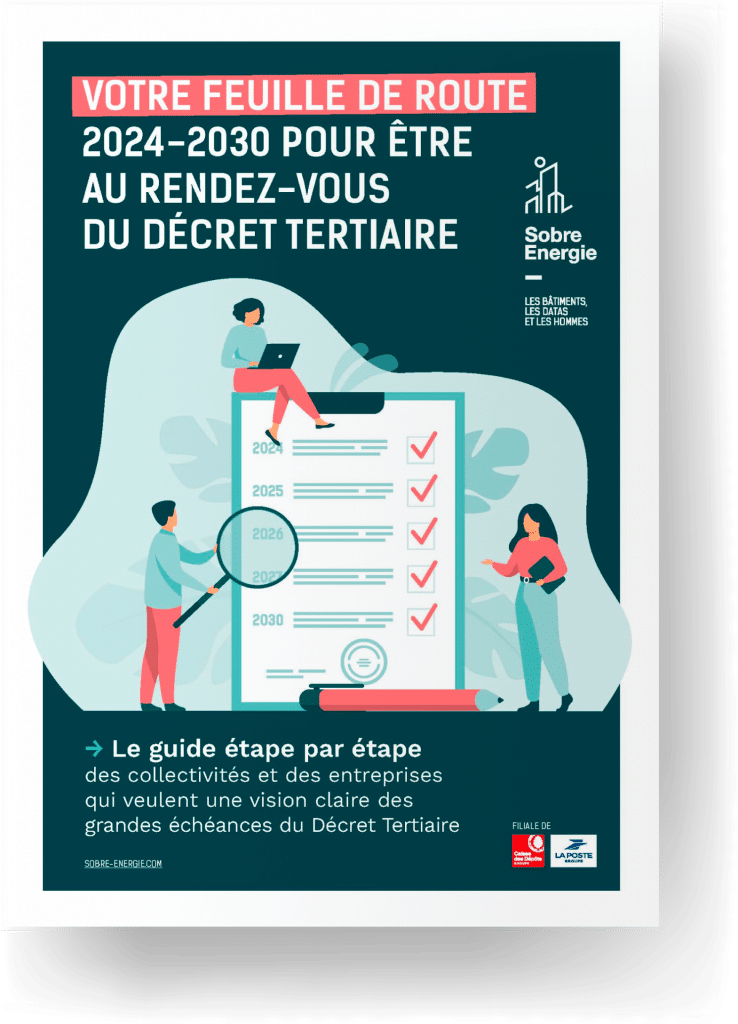The trajectory is clear, the solutions multiple.
To achieve the objectives of the Tertiary Decree, -40% energy consumption of tertiary buildings by 2030, -60% by 2050, the smart building, the intelligent building, is an asset.
3 good reasons in favor of smart building
Smart building consists of integrating two types of solutions:
- Active solutions to better manage the operation of equipment using big data
- Passive solutions to limit building energy needs
Active solutions involve connected objects such as IoT sensors
Passive solutions consist of the choice of materials and thermal insulation of the building envelope to improve the thermal comfort of occupants while limiting energy needs.
1) Detect consumption anomalies
The sensors make it possible to detect the presence, temperature, brightness and humidity of a room.
Therefore, the data reported is essential for detecting consumption anomalies:
- ex a room that stays lit all night
- part of the building heated to 20°C on weekends while the area is unoccupied
=) To find out more about the importance of energy data in a building
=) Did you know that 30% of the consumption of a tertiary building is due to energy waste?
2) Optimize building operation
The smart building also involves the installation of a GTB, centralized building management . Result: control of the set temperature on heating and air conditioning is optimized for the entire building.
1°C less than the set temperature means 7% less consumption (Source Ademe)
Note that by January 1, 2025 , the BACS Decree requires the implementation of a building automation and control system, of the GTB type. This concerns all tertiary buildings for which the heating or air conditioning system, whether or not combined with a ventilation system, has a nominal power > 290Kw .
=) To find out more about our platform and energy management to optimize your consumption
=) 5 preconceived ideas about the Tertiary Decree
Beyond these first two good short-term reasons, smart building is also useful in a long-term real estate strategy.
3) Integrate your building into a smart city network
The building of tomorrow will be connected to an intelligent network, for example an office building will heat a residential area. From smart building to smart city.
A building consumes energy through its different uses (HVAC, lighting, ECS, etc.). But it can also produce it, through the recovery of waste heat or photovoltaic production on the roof.
Tomorrow, the intelligent building capable of producing and controlling clean energy in the building and beyond in a connected network will be highly valued compared to a standard building. Even more so, in a context of rising energy prices and regulatory pressure .
Several recent regulations favor such production of renewable energy in buildings:
- RE 2020 , the new thermal regulations which came into force on 1st It succeeds RT 2012 and requires new buildings to be energy positive, that is to say to produce more energy than is required. consumes.
- Climate and Resilience Law of 2021 provides for the compulsory installation of photovoltaic panels on the roofs of office buildings of more than 1000m2. This concerns new but also old buildings, in the event of major thermal renovation work.
=) To find out more about RE 2020
=) To understand why the tertiary decree goes through solar
Smart building and techno-discernment
Technology, big data and the Internet of Things, therefore helps to optimize consumption, but is not enough on its own. It must remain a means and not an end in itself.
Indeed, the growing carbon footprint of digital technology and the depletion of resources (rare metals necessary for the manufacture of electronic equipment) is the other side of the coin.
Today, the internet's digital footprint represents 4% of CO2 emissions globally. According to the Shift Project study, it will represent 8% of total global emissions by 2025. That is to say the equivalent of all automobile traffic on the planet.
Figures which plead for a reasoned use of connected objects: “techno discernment” according to the expression of Philippe Bihouix, engineer and author of “The age of low techs”.
=) To find out more about responsible digital good practices
To reduce energy consumption in a building, technology and people must be complementary : connected sensors are useful to limit waste during the building's vacancy phase. But a digital data platform alone is not enough . At the same time, human support is needed to raise awareness among occupants and technical staff about energy sobriety . Then get them to take action through workshops, eco-friendly challenges, serious games.
According to the Sustainable Real Estate Observatory, technical optimization of operation through active solutions (sensors, GTB), coupled with the involvement of users in sober use of the building makes it possible to achieve up to 40% less consumption.
=) To find out more about our DATAMARC NEO energy management platform
🤖 Summarize this article with an AI
Click on a button to automatically sum up this page with the AI of your choice.
